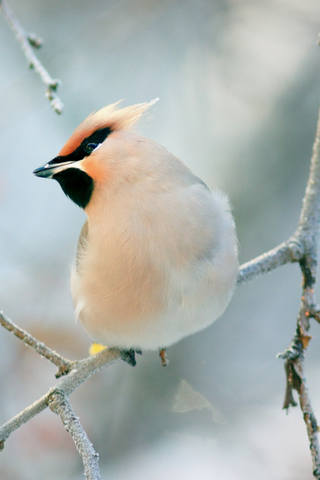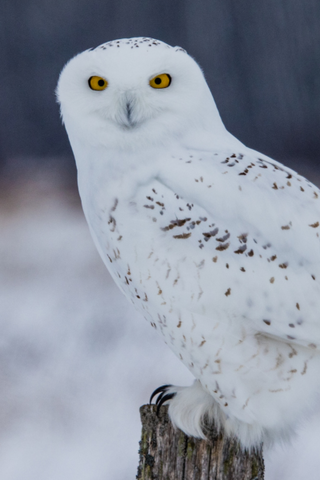In the world of bird watching, staying warm is not just a matter of comfort, but also a matter of safety and success. As any experienced birdwatcher knows, one of the keys to staying warm in the wild begins with proper headwear.
In this article, we will explore the importance of choosing the right headwear for birding and animal watching and provide insights into the different types of bird watching headwear, the materials they are made from, fitting considerations, and tips for care and maintenance.
Whether you are a seasoned birdwatcher or a novice, understanding the role of headwear in maintaining body heat and its impact on your enjoyment of animal watching is essential.
Understanding the Importance of Proper Headwear for bird watching
When it comes to bird and animal watching, proper headwear is essential for various reasons. Not only does it help maintain body heat, but it also contributes to birding success by providing concealment and camouflage.
The Role of Headwear in Maintaining Body Heat
When venturing out into cold weather conditions, it's crucial to protect your head. The head is one of the body's primary heat-loss areas, responsible for up to 40% of heat loss. By wearing the right headwear, you can prevent heat loss and keep your body warm during extended periods in the field.
Thermal headwear acts as a barrier against the elements, shielding your head, ears, and neck from cold winds, rain, and snow. It effectively traps and retains body heat, acting as insulation to prevent heat loss. By maintaining your body's core temperature, the right headwear contributes to overall comfort, focus, and performance while birding. The proper headwear can also shield your eyes from glare, making it easier to spot those beautifully camouflaged birds in winter.
But what makes the right headwear? Look for materials that are both insulating and moisture-wicking. Insulating materials like wool or fleece help retain body heat, while moisture-wicking fabrics like polyester or merino wool draw sweat away from your skin, keeping you dry and comfortable.
How Headwear Contributes to Bird Watching Success
While staying warm is crucial, headwear also plays a significant role in birding success. It's not just about comfort; it's about blending into your surroundings and remaining undetected by game animals.
Match the Environment
Choosing headwear that matches the environment and mimics natural colors and patterns can increase your chances of getting closer to the birds or animals without scaring or spooking them.
Feature packed
Well-designed headwear incorporates additional features that provide both protection and concealment. Ear flaps, face masks, and neck warmers not only keep your head warm but also effectively hide any exposed skin. This reduces the chances of detection by sharp-eyed animals who may be on high alert for any signs of movement or human presence.
Consider the conditions
When selecting headwear, consider the specific conditions you'll be facing.
If you're bird watching in frigid temperatures, opt for headwear with built-in insulation and windproof materials. If you're bird watching in milder weather, lightweight and breathable headwear may be more suitable.
Remember, proper headwear is not just a matter of comfort; it can make a significant difference in your bird watching experience. So, choose wisely and enjoy the benefits of staying warm, concealed, and ready for a successful expedition!
Different Types of Bird Watching Headwear
Bird watching headwear is an essential part of any birdwatcher's gear, providing protection and comfort in various weather conditions. From insulated hats to lightweight beanies and versatile caps, there are numerous options to suit different needs and preferences.
Insulated Bird Watching Hats

When it comes to cold weather bird watching, insulated hats are a popular choice. These hats are designed to keep birdwatchers warm and comfortable in freezing temperatures. They are typically lined with insulation material, such as fleece or synthetic fibers, which helps to trap and retain body heat. The added insulation ensures that birdwatchers can stay out in the field for extended periods without feeling the biting cold. Additionally, insulated bird watching hats often feature ear flaps that can be folded down to protect the ears and neck when temperatures drop even further.
Bird Watching Beanies and Neck Warmers
For birdwatchers who prefer lightweight and versatile headwear options, bird watching beanies and neck warmers are excellent choices. Beanies are close-fitting caps that cover the crown of the head, providing warmth without adding bulk. On the other hand, neck warmers cover the neck, offering maximum protection from the elements.
These headwear options are typically made from breathable materials, such as wool or synthetic blends, allowing for moisture-wicking properties. They are ideal for early mornings or mild weather conditions when heavy insulation is not required but some warmth is still desired.
Birding Caps and Their Varieties
When it comes to classic bird watching headwear, caps are a go-to choice for many birdwatchers. Bird watching caps are typically made of durable and weather-resistant materials such as cotton or polyester, ensuring they can withstand the rigors of the outdoors.
They provide sun protection, ventilation, and a casual, comfortable fit that bird watchers appreciate. Depending on the style, some birding caps may also incorporate built-in ear flaps or neck protection for added warmth and concealment, making them versatile options for different bird watching environments.
Whether you're bird watching in freezing temperatures or mild weather conditions, choosing the right headwear is crucial for your comfort and performance in the field. Consider the specific weather conditions, duration of your bird watching trips, and personal preferences when selecting the perfect bird watching headwear for your needs.
Materials Matter: Choosing the Right Fabric for Your bird watching Headwear
Wool vs. Synthetic: A Comparison
When it comes to bird watching headwear, the choice of fabric plays a crucial role in ensuring comfort and performance in the field. The two most common materials used are wool and synthetic fabrics. Each has its own set of advantages, and understanding their properties can help you make an informed decision.
Wool, a natural fiber, is renowned for its exceptional insulation properties. It is highly breathable, allowing air to circulate and regulate body temperature effectively. This breathability also helps wick away moisture, keeping you dry even during intense physical activity. Additionally, wool is odor-resistant, making it an excellent choice for extended bird watching trips where hygiene may be a concern.
Another advantage of wool is its ability to retain its thermal properties even when wet, providing reliable warmth in damp conditions. However, it's worth noting that wool can be bulkier and slower to dry compared to synthetic alternatives.
Synthetic fabrics, on the other hand, are designed to mimic the properties of natural fibers while offering additional benefits. These fabrics are typically lightweight and quick-drying, making them ideal for birdwatchers who need to move swiftly and don't want to be weighed down by heavy headwear. Many synthetic materials are also treated with water-repellent or waterproof coatings, providing added protection against rain or snow.
This feature is particularly valuable for birdwatchers who frequently find themselves in wetter climates or unpredictable weather conditions. However, it's important to consider that synthetic fabrics may not provide the same level of insulation as wool in extremely cold environments.
The Benefits of Waterproof Materials
When bird watching in wet or snowy conditions, having headwear made from waterproof materials can make a significant difference in comfort and overall bird watching experience. Waterproof materials, such as Gore-Tex or laminated fabrics, prevent moisture from penetrating the headwear, keeping your head dry and maintaining insulation properties.
This is especially important in preventing heat loss and protecting against hypothermia, as wet headwear can quickly lead to discomfort and compromised body temperature regulation. Additionally, waterproof headwear is often designed with sealed seams and adjustable closures to ensure a snug fit and added protection against the elements.
Breathability and Why It's Important

Adequate breathability in bird watching headwear is essential to maintain comfort during physical activity. When exerting yourself while bird watching, moisture buildup can occur, leading to discomfort and potentially cold temperatures. To combat this, it's crucial to look for headwear that incorporates breathable fabrics or ventilation panels. These features allow for air circulation and moisture evaporation, preventing excessive sweating and condensation inside the headwear. By choosing breathable headwear, you can stay dry and comfortable even during long periods of stillness.
Ultimately, the choice between wool and synthetic fabrics for your bird watching headwear depends on your personal preferences and the specific conditions you'll be bird watching in. Consider factors such as insulation, moisture management, and breathability to make an informed decision that will enhance your bird watching experience. Whether you opt for the natural warmth of wool or the lightweight versatility of synthetics, choosing the right fabric will ensure that your bird watching headwear performs at its best.
Fitting Your bird watching Headwear Correctly
Sizing and Measuring for bird watching Hats
Choosing the right size is crucial for a properly fitting bird watching hat. To measure your head size accurately, use a flexible measuring tape and wrap it around the widest part of your head, just above the ears and eyebrows. Once you have your measurement, refer to the manufacturer's size chart to determine the appropriate hat size. Additionally, consider the hat style and any adjustable features it may have, such as straps or drawstrings, to ensure a secure fit.
Adjustability and Comfort Considerations
When selecting bird watching headwear, consider the adjustability and comfort features of the design. Many bird watching hats come with adjustable closures, such as Velcro straps or snapback systems, allowing for a customizable fit. These options are especially beneficial for birdwatchers who wear different layers or require flexibility in adjusting the tightness of the headwear throughout the day. Additionally, look for headwear that offers moisture-wicking linings, soft interior bands, and ergonomic designs to enhance overall comfort during long bird watching trips.
Caring for Your bird watching Headwear
Cleaning and Maintenance Tips
Proper cleaning and maintenance of your bird watching headwear are essential to maximize its longevity and performance. Before attempting to clean your headwear, always refer to the manufacturer's care instructions, as some materials may require specific cleaning methods.
For most bird watching headwear, hand washing with mild detergent is recommended. Gently rub the fabric to remove any dirt or stains, rinse thoroughly, and air dry. Avoid using harsh chemicals, bleach, or machine washing, as these can damage the materials and reduce their effectiveness.
Proper Storage for Longevity
To ensure your bird watching headwear stays in top condition season after season, proper storage is crucial. Always clean and fully dry your headwear before storing it. Store your headwear in a cool, dry place away from direct sunlight or extreme temperature changes. To prevent the fabric from losing its shape, maintain its structure by stuffing it with tissue paper or using a specialized hat storage device.
Conclusion
Choosing the right headwear is a crucial step in staying warm while bird watching. The proper selection of bird watching headwear can provide insulation, protection, and concealment, ultimately enhancing both comfort and bird watching success. Consider the role of headwear in maintaining body heat, the various types of bird watching headwear available, the materials used, and the importance of fitting and caring for your headwear.
By understanding and implementing these factors, you can ensure that your bird watching headwear is not only functional and dependable but also a valuable asset in your bird watching gear arsenal. Stay warm, stay safe, and happy bird watching!














